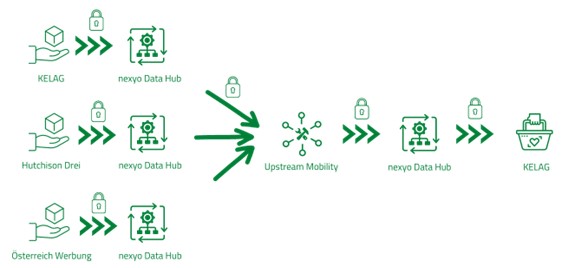Use Case Efficiency Optimization in a District Heating Network
Use Case Efficiency Optimization in a District Heating Network
Problem: An alpine community covers up to 90 percent of its heat demand by means of district heating. Consumption is highly dependent on tourist frequency and capacity utilization, which makes it difficult to accurately estimate demand. In addition, biomass must be regularly transported to the region as an energy source, which must be planned according to weather conditions due to possible avalanche runoffs.
Solution approach: In a data service ecosystem, multiple data sources are sovereignly linked: Anonymized and aggregated cellular location data from a mobile operator, energy consumption data from the energy operator, calendar data from open sources, weather data from a weather service and overnight stay data from the tourism organization. A forecasting model is thus created by a data service provider as an information base, which enables intelligent and optimized decisions regarding fluctuations in consumption, delivery times and quantities for energy suppliers and consumers.
Added value: On the one hand, this creates business value through
- more efficient operation of the power plant (by up to 3%)
- data-based targeted control of demand fluctuations, and
- cost savings through value maximization
On the other hand
- savings in biomass as the energy source contributes to environmental protection as well as
- the creation of a scalable solution for a more sustainable energy economy.





